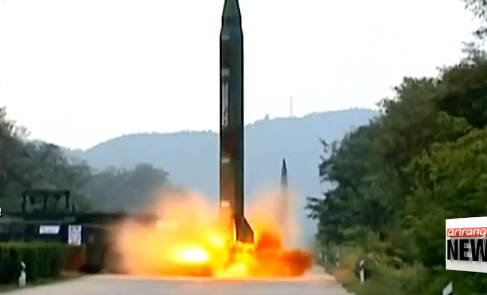North Korea tested another missile on Wednesday. But according to U.S. military officials, it exploded seconds after being launched.
周三,朝鮮試射了另一枚導(dǎo)彈。但據(jù)美國軍方官員稱,導(dǎo)彈發(fā)射幾秒后爆炸。
North Korea has been stepping up the pace of its missile tests, raising tensions across the continent. The launch failure Wednesday highlights some recent setbacks for the country's missile program.
一直以來,朝鮮加快導(dǎo)彈試射的步伐,加劇整個(gè)大陸的緊張局勢。周三發(fā)射失敗凸顯近期朝鮮導(dǎo)彈計(jì)劃遭遇一些挫折。

Earlier this month, the North successfully fired four missiles simultaneously in Japan's direction. U.S. officials confirmed North Korea's plan had been for five missiles, but one failed to launch.
本月早些時(shí)候,朝鮮成功向日本方向同時(shí)發(fā)射了四枚導(dǎo)彈。美國官員證實(shí),朝鮮的計(jì)劃是五枚導(dǎo)彈,但有一枚發(fā)射失敗。
As of Wednesday morning, officials hadn't said what kind of missile was involved in the failed launch. But if it was an intermediate-range Musudan, Wednesday's test would echo seven failures in 2016.
截至周三上午,官員們沒有透露發(fā)射失敗的是什么類型的導(dǎo)彈。如果是中程舞水端導(dǎo)彈,周三的測試再現(xiàn)2016年的七次失敗。
The country didn't appear to release footage of Wednesday's failed launch, which occurred during annual joint-military exercises between the U.S. and South Korea.
朝鮮似乎沒有公布周三失敗的發(fā)射的畫面,此時(shí)美國和韓國在進(jìn)行年度聯(lián)合軍演。
譯文屬可可原創(chuàng),僅供學(xué)習(xí)交流使用,未經(jīng)許可請勿轉(zhuǎn)載。











